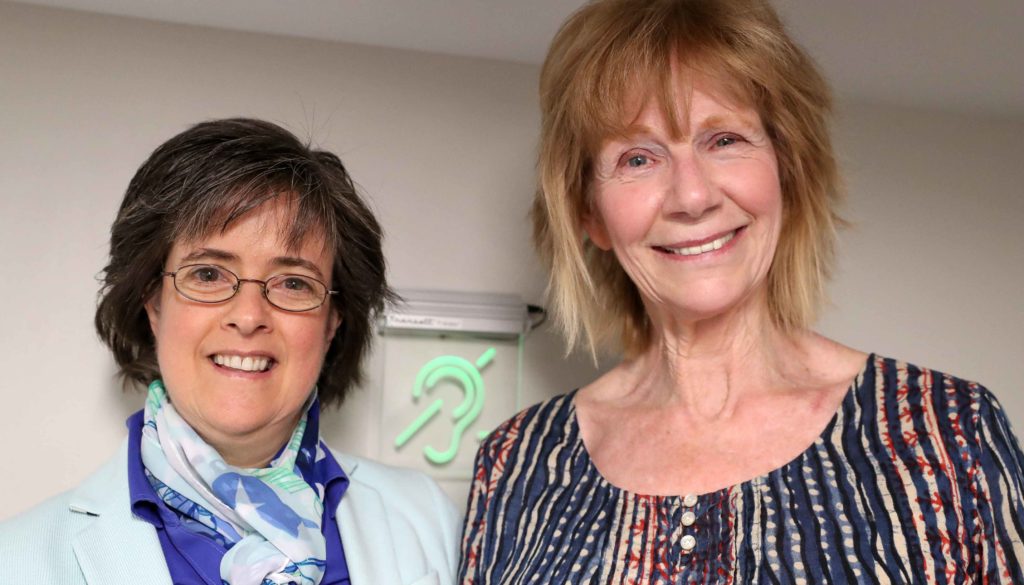
By TYLER ELLYSON
UNK Communications
KEARNEY – Carol Lomicky’s face lit up when she heard the system in use.
“This is wonderful,” she said Monday while standing inside the Antelope Room at the University of Nebraska at Kearney’s Nebraskan Student Union. “It really works well.”
Lomicky, who uses a hearing aid in one ear and has a cochlear implant in the other, was in the Antelope Room for the first time since the installation of a specialized system that benefits people with hearing loss. The project, part of a recent renovation of the conference room, was spearheaded by the former UNK journalism professor and current UNK associate professor of teacher education Dawn Mollenkopf, who also has hearing loss.
Since her retirement in 2012 after three decades at UNK, Lomicky has been a dedicated advocate for the installation of hearing loop systems in the Kearney area.
“It’s something I took on because hearing loops work,” she said.
The systems, like the one in UNK’s Antelope Room, allow people with hearing aids or cochlear implants to better hear a speaker, singer or anything else transmitted through a microphone.

UNK is the first University of Nebraska campus to offer a space that features a hearing loop to serve students, staff, faculty and guests. It also is believed to be the only college campus in the state with the technology.
Unlike an FM system, which amplifies all the sounds around you, a hearing loop uses copper wire to electromagnetically transmit a signal directly to the telecoil in a person’s hearing aid or cochlear implant, which functions like a wireless loudspeaker directly linked to the room’s sound system. Looping technology produces a clearer, sharper sound by eliminating background and other competing noise.
“It’s like somebody speaking directly inside your ear,” Lomicky said. “It’s just startling how clear it is.”
Another advantage is the elimination of headphones and battery packs that come with most FM systems. To use a hearing loop, the listener just needs to flip the telecoil switch on their hearing aid or cochlear implant.
In conference rooms and other large spaces, Mollenkopf said it’s difficult for people with hearing loss to rely solely on hearing aids or cochlear implants.
“Hearing aids and other assistive devices are all made for 6 feet and closer. Anything farther than 6 feet is a guess,” said Mollenkopf, who was born with genetic hearing loss that worsened over time. She’s now nearly deaf in one ear and hard of hearing in the other.
Lomicky and Mollenkopf first connected at a Hearing Loss Association of America conference, then they teamed with David Brandt, assistant director of UNK’s Disability Services for Students Office, to present on hearing loops during Disability Awareness Week in 2017. That presentation was in the Antelope Room – formerly the Cedar Room – which is now the first UNK space to feature a hearing loop serving students, staff, faculty and guests.
“UNK has so many events attended by people from the community who have hearing loss,” Lomicky said. “Not only are you serving your own people, you’re bringing accessibility to the entire community.”
According to Lomicky, UNK is one of 16 locations in Kearney with hearing loop systems available.
“Kearney is the most looped city in the state, which is amazing,” she said.